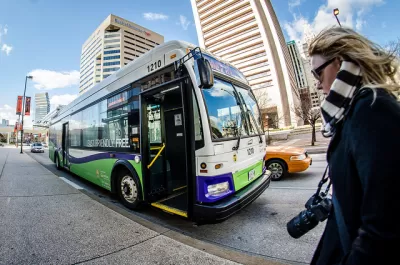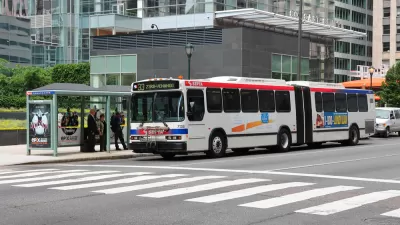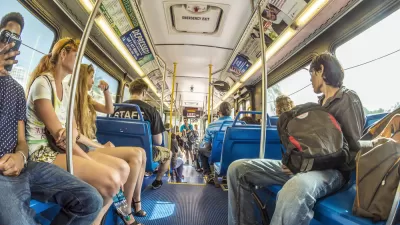With federal infrastructure funding on the table, local leaders are calling for a comprehensive strategy to improve the region’s public transit.

A group of civic leaders in Baltimore is calling on the city and the region to develop a comprehensive vision for the region’s mass transit—before federal infrastructure funds dry up. As Bruce DePuyt reports in Maryland Matters, “Their campaign, called Baltimore’s Transit Future, hopes to unite elected leaders, the business community and the public in support of a long-range plan to expand bus and rail service. They also want to make existing service more reliable.”
According to the article, “The effort will be shaped by six ‘pillars,’ which will include reducing the repair backlog, improving access to job centers, equity and the development of a 10-year ‘Rapid Transit Expansion Program.’” DePuyt notes that “Baltimore’s rail system pales in comparison to Metro, the commuter rail network in the Washington, D.C. region, even though both were launched at the same time. The region’s bus network performs below cities of comparable size.”
The campaign emphasizes that “As the region tries to bounce back from the pandemic, and with significant expansion underway at Tradepoint Atlantic, business leaders said the region is being held back by its substandard bus and rail operations.”
“Passage of a federal infrastructure bill has spurred conversations about the need to improve transit in Baltimore, with many advocates arguing for the creation of an authority similar to the Washington Metropolitan Area Transit Authority (WMATA).” DePuyt points out that “Leaders of the Baltimore’s Transit Future campaign said they are not endorsing the authority concept, nor have they coalesced behind any particular modes of travel or routes.”
FULL STORY: Baltimore Must Embrace Transit Vision While the Feds Are Flush With Funds, Groups Say

Planetizen Federal Action Tracker
A weekly monitor of how Trump’s orders and actions are impacting planners and planning in America.

Maui's Vacation Rental Debate Turns Ugly
Verbal attacks, misinformation campaigns and fistfights plague a high-stakes debate to convert thousands of vacation rentals into long-term housing.

Restaurant Patios Were a Pandemic Win — Why Were They so Hard to Keep?
Social distancing requirements and changes in travel patterns prompted cities to pilot new uses for street and sidewalk space. Then it got complicated.

In California Battle of Housing vs. Environment, Housing Just Won
A new state law significantly limits the power of CEQA, an environmental review law that served as a powerful tool for blocking new development.

Boulder Eliminates Parking Minimums Citywide
Officials estimate the cost of building a single underground parking space at up to $100,000.

Orange County, Florida Adopts Largest US “Sprawl Repair” Code
The ‘Orange Code’ seeks to rectify decades of sprawl-inducing, car-oriented development.
Urban Design for Planners 1: Software Tools
This six-course series explores essential urban design concepts using open source software and equips planners with the tools they need to participate fully in the urban design process.
Planning for Universal Design
Learn the tools for implementing Universal Design in planning regulations.
Heyer Gruel & Associates PA
JM Goldson LLC
Custer County Colorado
City of Camden Redevelopment Agency
City of Astoria
Transportation Research & Education Center (TREC) at Portland State University
Jefferson Parish Government
Camden Redevelopment Agency
City of Claremont





























